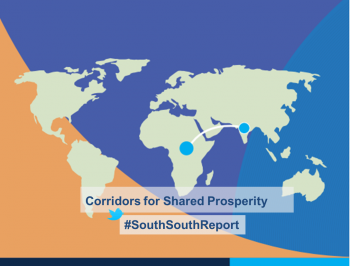Full Text Sharing

You can find the report here http://intellecap.com/sites/default/files/publications/Intellecap%20-%20...
Inclusive business models that use market-based approaches
to solve challenges of social inequity, and create affordable
access to basic needs such as food, healthcare and education,
have gathered momentum in India over the past decade. Of an
estimated 2000 such businesses in India
1
, 220 have raised $1.6
billion in risk capital financing, showing potential to grow
and scale
2
. From a sectoral standpoint, most activity was in the
financial inclusion space, followed by agriculture, healthcare
and renewable energy.
There are several similarities in the socio-economic contexts
of India and other developing countries – especially those in
South and South East Asia and Sub-Saharan Africa. Inclusive
businesses that thrive in India can potentially be adapted and
transferred to these countries to solve developmental chal
-
lenges. However, successful transfer is challenging given the
nascent state of markets and infrastructure in most developing
countries. More awareness is needed around ‘what works’.
This study by International Finance Corporation and Intel
-
lecap seeks to address this need-gap by building a framework
for systematic transfer of Indian inclusive business models to
other developing countries, with a focus on Africa as a destina
-
tion market.
The study analyzes the demand for inclusive business models
in Africa in three high-impact focus sectors for transfer:
agriculture, healthcare and renewable energy, and discusses
key drivers of transfer of inclusive models from India to
Africa. Eleven inclusive businesses were selected to assess the
potential of transferring Indian inclusive business models to
other developing countries and to gather empirical evidence
on ‘what works’. Their experiences were investigated to create a
wealth of insights. These businesses faced some critical choices
during the transfer process, such as how to prepare, which
market to focus on, and which format to choose. Analysis
suggests that three key decision-drivers (figure 1) dictate these
choices, which form the foundation of the transfer framework
that resulted from this study. This framework is also informed
by insights from over 44 industry practitioners.
Intent
Understanding business objectives that drive transfer, and
organizational preferences with respect to risk, degree of
strategic control and openness to adapting the business model.
Capacity
Management strength, financial and operational readiness to
transfer to the target market while ensuring business continu
-
ity in India.
Dependencies
Understanding different ways in which the inclusive business
model relies on its external market environment to thrive, and
using this information to make choices about entry markets
and transfer formats.
Each decision-driver was broken down into interlinked
choices that work together. This resulted in a seven-step
transfer roadmap: (i) identifying transfer objectives, (ii)
intent
capacity
dependencies
Objectives and
preferences in transferring to
a new market
Organizational
readiness for
transfer
Organizational and sectoral
dependencies that will dictate
choices in new markets
figure 1
drivers of systematic business transfer
6 | 7
validating need or demand in new markets, (iii) understanding
critical business dependencies, (iv) selecting entry markets, (v)
building internal organizational capacities, (vi) adapting the
business model for a new market, and (vii) choosing appropri
-
ate transfer and partnership formats.
These steps are explained in more detail through this study.
Nuances in applying this framework and roadmap are brought
out through in-depth case studies published in a companion
guide to this report. Finally, a downloadable toolkit will help
inclusive businesses understand these choices in the context
of their own models. The toolkit includes a Microsoft Excel-
based self-diagnostic tool to guide businesses towards transfer
insights, as well as implementation resources in the form of
checklists (figure 2).
As it progresses, this work will grow to include insights on
bi-directional transfer. The sectoral and geographic focus of
this resource will be expanded to make it relevant to a larger
audience.
The exercise of developing a transfer framework also high
-
lighted the need for concerted efforts to build a corridor for
transfer of innovative inclusive business models. While over
half the businesses in the sample group were supported in the
transfer process by funding from donors and impact investors,
only three had access to advisory and business support for
planned transfer. A multi-stakeholder approach is needed to
identify models, signpost opportunities, and provide financ
-
ing and technical assistance if transfer of such models is to be
scaled up. Programs such as the Millennium Alliance, UKaid’s
Innovative Ventures and Technologies for Development
(INVENT), and USAID’s India-Africa Agriculture Innovation
Bridge as well as patient capital providers such as Bamboo
Finance and Acumen Fund are already pioneering such trans
-
fer. This can be scaled up to a stage where it is commercially
driven and sustainable with greater participation from other
private sector actors.
Corridors for Shared Prosperity
and its
companion resources are intended as the first step of achieving
such a vision.










Add new comment